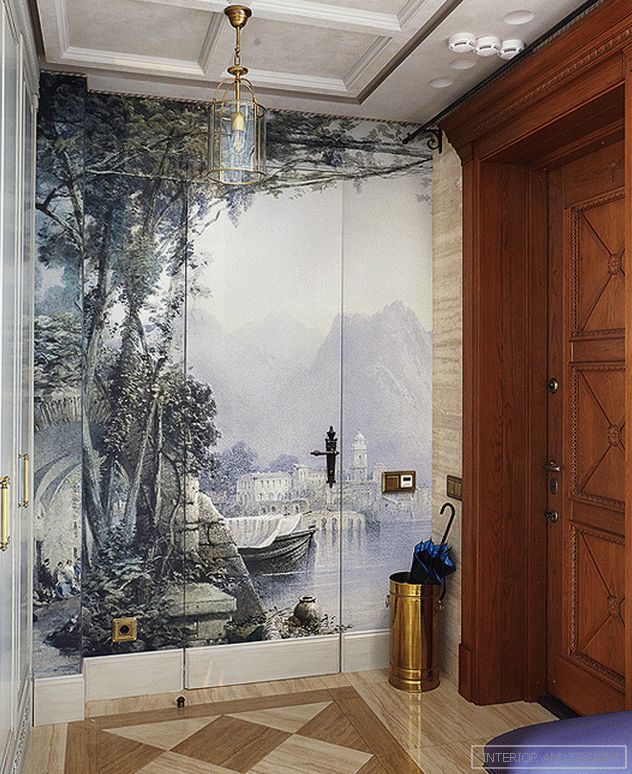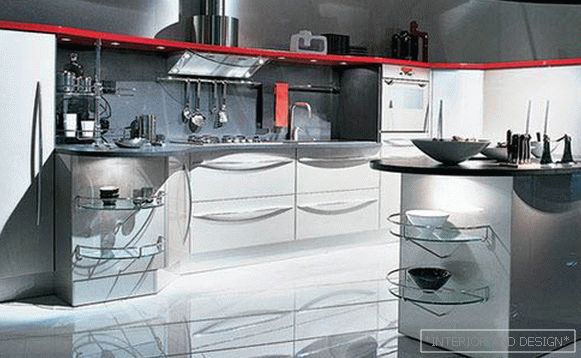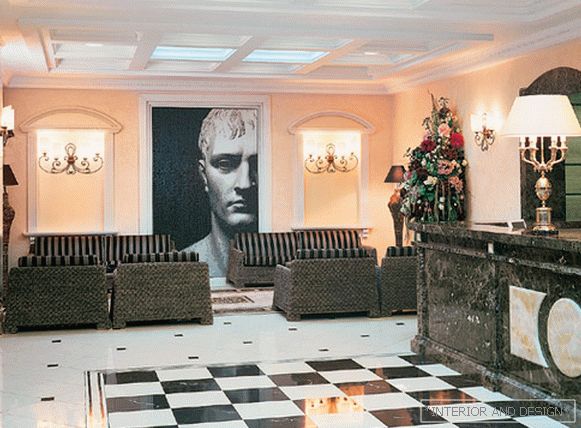José Rafael Moneo Valles is one of the most influential Spanish architects. Winner of the Pritzker Prize and numerous professional awards, including the National Architecture Prize (2015).
He built in Spain under the dictatorship of Franco, taught at Harvard during the economic crisis ... Moneo does not pursue the latest trends in author's architecture and is alien to plastic expressionism. His buildings are characterized by asceticism and reasonable compliance with the environment. Moneo's massive volumes grow into the surrounding city like ancient trees. Deaf planes of the walls, columns and natural textures of materials are complemented by true European attention to detail. His projects are regularly praised for achieving the elusive quality of timelessness. As archcritic Robert Campbell wrote in his essay on the award of Moneo to the Pritzker Prize, “the Moneo building characterizes the awareness of time, it remembers its predecessors. It formulates its mission in the modern world through memory. ”
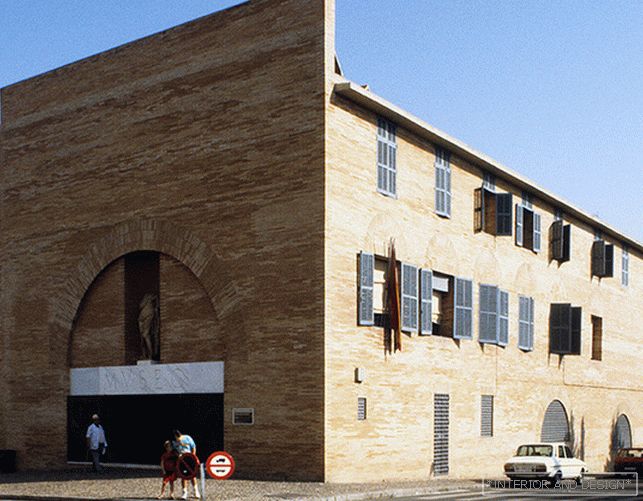 National Museum of Roman Art. Museum of Roman Art. Merida 1986
National Museum of Roman Art. Museum of Roman Art. Merida 1986 José Rafael Moneo Valles. Born in 1937 in Tudela (Spain). He graduated from ETSAM (Polytechnic University of Madrid). In 1985-1990. He headed the Harvard School of Design. In 1996 he won the Pritzker Prize, in 2001 he won the Mies van der Rohe Prize, and in 2006 he won the RIBA Gold Medal.
Moneo was born on May 9 in a small town in the mountainous province of Navarre in 1937. He went to study in the capital and, shortly after receiving his diploma, won his first National Award for the restoration of the Museum of History of Madrid. He was 24. For the internship he chose perhaps the most avant-garde workshop then: Moneo went to Denmark, to Jorn Utzon himself, fascinated by the enchanting project of the Sydney Opera. Moneo created his bureau at the age of 28, having already received a degree, and at 37 decided to publish the magazine Arquitectura Bis, becoming a renowned teacher and a caustic critic. About academic career Moneo never forgot: after the departments of Barcelona and Madrid, he was noticed in the States. In 1985, before the oil crisis and the stock market collapse, he moved his family, his wife Belen and his three daughters, to the professorial suburb of Boston, where he received an enviable position as chairman of the design department at Harvard University of Architecture.
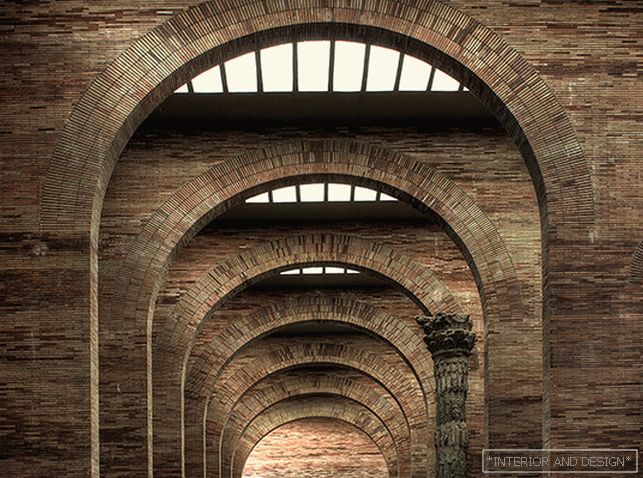 National Museum of Roman Art in Merida (1986).
National Museum of Roman Art in Merida (1986). Constant practice for a career is no less important than theory. Moneo builds a little but continuously. Among the most significant works are the National Museum of Roman Art in Merida (1986), the Museum of Modern Art and Architecture of Stockholm (1998), the Cathedral of the Mother of God of Angels in Los Angeles (2002), the reconstruction of Atocha’s largest railway station (1992) and the expansion of the Prado complex in Madrid (2007). European cultural heritage requires constant updating, and not everyone trusts it.
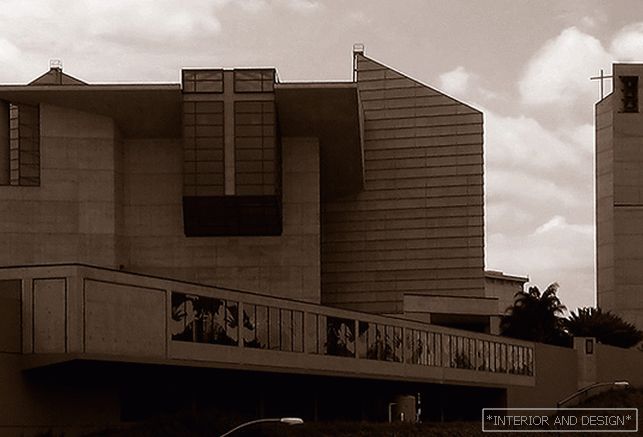 Cathedral of the Mother of God of Angels in Los Angeles. 2002
Cathedral of the Mother of God of Angels in Los Angeles. 2002 He has a name and in the subject design. “When I was drawing Atocha Station, I thought about everything, down to the last detail ... Houses are an autobiography, day after day, the prints of those who live there accumulate. The house does not need special furniture. Hospitals, stations, museums - completely different. These are anonymous places devoid of atmosphere. A thing designed for them can make them animate. To assert that design should speak with feelings, and not be attractive, beautiful, is to get a thing that will witness a lack of culture. And I prefer the cultural world visually. "
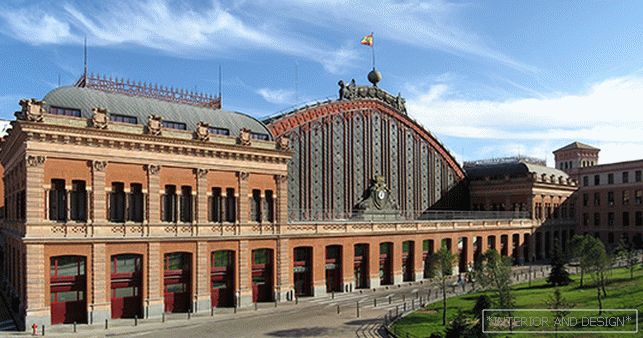 Reconstruction of Atocha railway station in Madrid. 1992
Reconstruction of Atocha railway station in Madrid. 1992 Moneo openly acknowledges the relationship with the 1930s, when the plastic arts were on the wave. Even its simplest design elements are clearly inspired by Wright and Aalto, Bauhaus and Breuer. He admits that he loves to design seats, as this implies structural thinking. Chairs are architectural. In 1997, he co-founded BD Ediciones, a famous brand that was the first in Spain to introduce key designers such as Scarpa or Morrison. For Roca, he comes up with a series of sanitary ware Frontalis, confirming the importance of an interdisciplinary approach. In 2016, Hermès House released his Oria armchairs. "Architects can benefit from knowledge in other areas, but all their work is essentially just an experience for building architecture."
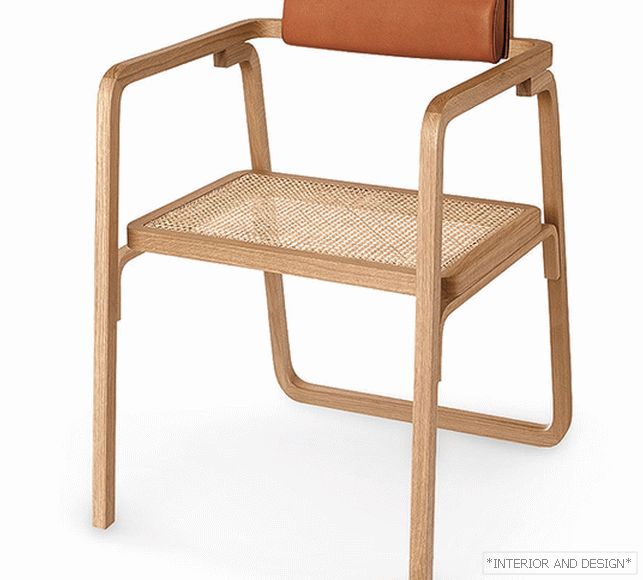 Oria chair. Hermes 2016
Oria chair. Hermes 2016 Like many major creators, Moneo is hard to “put” in the framework of one style: he is a modernist, a postmodernist, and by himself. In his youth, he actively promoted R. Venturi: postmodern ideas, revising the traditions of European culture. The hobby was useful, but today the support of Moneo is material and space. “The ability to speak out in architecture is based on the knowledge of many languages. Each time construction proceeds in a new way - completely changing, if the building is designed from stone, brick or simple concrete. In a sense, the material, as well as color, affects the perception of distance, sensual and tactile impressions. ”
The project of the new building of the University of Columbia (2010) showed Moneo from an unexpected side. Aluminum blinds, glass, rhythmic pattern of the facade ... "I really like the state of uncertainty at the beginning of work, when it is still unknown what will happen in the end."
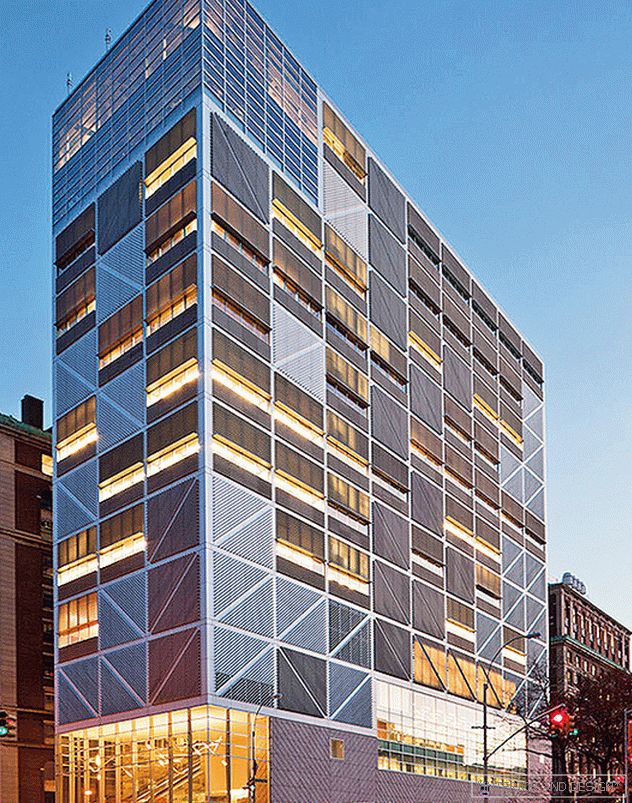 Columbia University Corpus. New York. 2010. Rafael Moneo / Davis Brody Bond Aedas / Moneo Brock Studio.
Columbia University Corpus. New York. 2010. Rafael Moneo / Davis Brody Bond Aedas / Moneo Brock Studio. 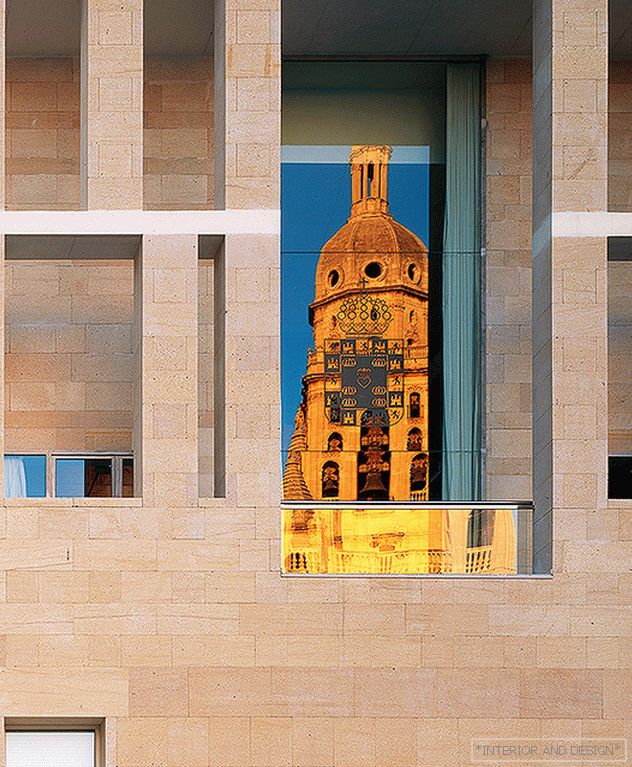 City hall. Murcia, Spain. 1998. Fragment.
City hall. Murcia, Spain. 1998. Fragment. 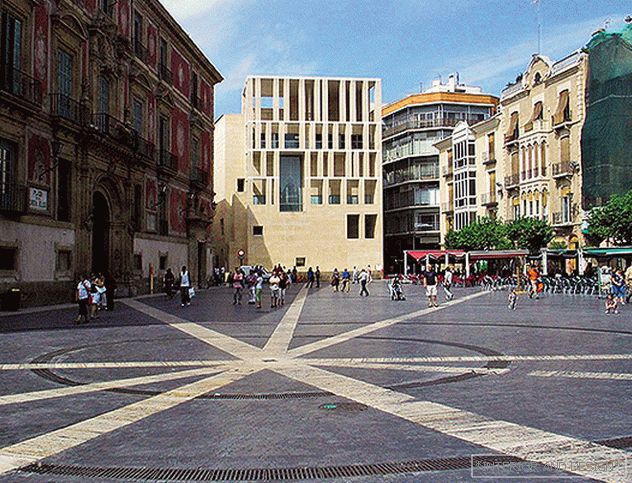 City hall. Murcia, Spain. 1998
City hall. Murcia, Spain. 1998 
